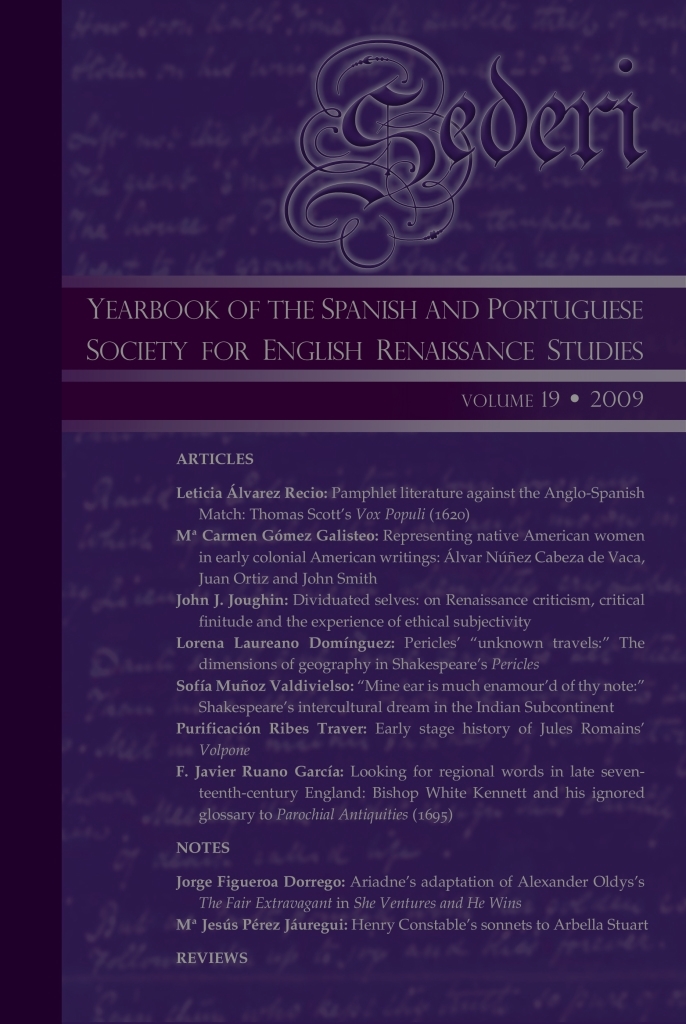Henry Constable’s sonnets to Arbella Stuart
Palavras-chave:
Henry Constable, Arbella Stuart, Elizabethan sonnets, Succession debate, Elizabeth I's CourtResumo
Although the Elizabethan poet and courtier Henry Constable is best known for his sonnet-sequence Diana (1592), he also wrote a series of sonnets addressed to noble personages that appear only in one manuscript (Victoria and Albert Museum, MS Dyce 44). Three of these lyrics are dedicated to Lady Arbella Stuart – cousin-german to James VI of Scotland–, who was considered a candidate to Elizabeth’s succession for a long time. Two of the sonnets were probably written on the occasion of Constable and Arbella’s meeting at court in 1588, and praise the thirteen-year old lady for her numerous virtues; the other one seems to have been written later on, as a conclusion to the whole book, implying that Constable at a certain moment presented it to Arbella in search for patronage and political protection. At a time when the succession seemed imminent, Constable’s allegiance to the Earl of Essex, who befriended...
Downloads
Downloads
Publicado
Edição
Secção
Licença
The copyright holder of the published contributions is SEDERI.The hardcopy and an open-access version of the journal will be published simultaneously. The issues will be available online in the SEDERI website (http://www.sederi.org/yearbook/) and other repositories that have signed an agreement with SEDERI.
The authors who publish with this journal agree to the following terms:
a) SEDERI retains copyright of the essay.
b) If the author wishes to republish or rewrite the essay for another journal, or include the essay published in SEDERI in their personal repositories, or in any other way, they should contact the editors to obtain permission to do so. This will entail citing SEDERI as the original source and sending the editors a copy of the new version, or the link to the website, in case of online publishing.
The author(s) hereby warrant(s) that:
a) The essay submitted for publication is an original creation and does not infringe any copyright or property right of another journal, author or publisher.
b) The essay submitted for publication has not been previously published, whole or in part, and is not being considered for publication elsewhere.
c) Written permission has been obtained for any material from other sources included in the essay submitted for publication.




